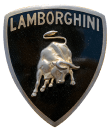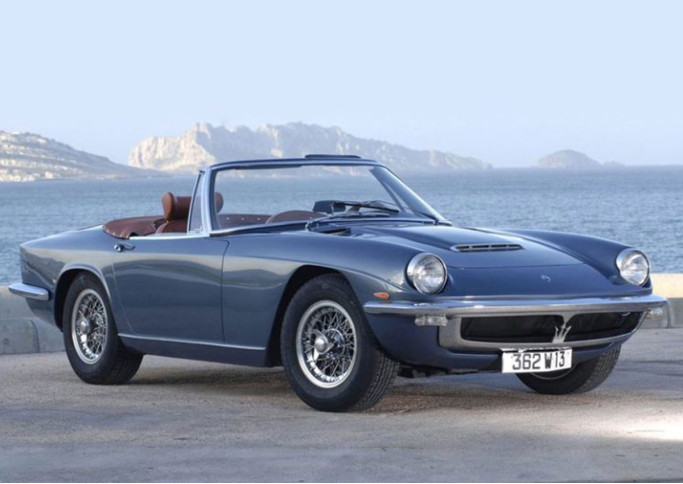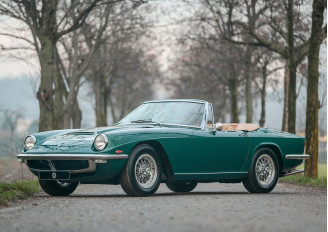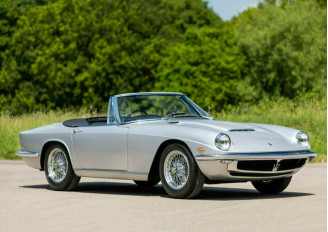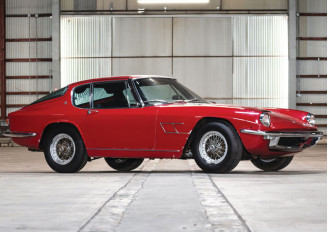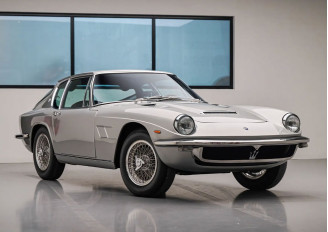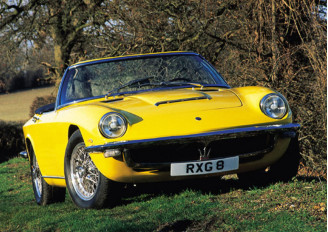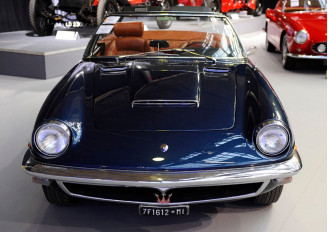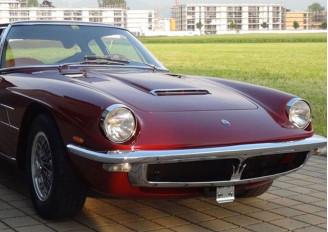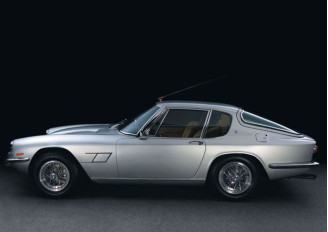Maserati Mistral (1963–1970): Design, Engineering, and Rare Spare Parts
Content
- 1 Design: Curved Lines and Inspiration from the Future
- 2 Origins and Style: From “Due Posti” to Mistral
- 3 Engineering and Technical Excellence
- 4 Production and Recognition
- 5 Technical Specifications of the Maserati Mistral
- 6 Body Construction of the Maserati Mistral and Engineering Lightness
- 7 Maserati Mistral Interior: Luxury, Comfort, and Functionality
- 8 Evolution of Maserati Mistral Engines: From 3.5 to 4.0 Liters
- 9 Competition with Ferrari and Its Own Niche
- 10 Maserati Mistral Equipment: A High Standard for Its Time
- 11 Suspension: Proven Solutions
- 12 Legacy and the Last Inline-Six
- 13 Maserati Mistral Technical Specifications
- 14 Rare Maserati Mistral Parts
- 15 Rarest Maserati Mistral Components
- 16 Popular Genuine Parts for Maserati Mistral
- 17 Model Significance
The Maserati Mistral marked the final stage in the evolution of the 3500 GT chassis and symbolized the brand’s transition to a new engineering philosophy. Presented at the 1963 Turin Motor Show, it combined Maserati’s technical heritage with the elegance of Italian design and expanded practical capabilities.
The Maserati Mistral is not just a car—it’s the embodiment of elegance, power, and engineering precision. In the mid-1960s, this model became a unique bridge between the classic style of the early grand tourer era and emerging design trends.
The Mistral went down in history as the first Maserati to receive an actual name rather than an alphanumeric designation. The name was inspired by the Mistral, a strong northern wind that blows through the Rhône Valley in France—a symbol of speed, strength, and purity of lines. These traits were perfectly captured in the design of the new coupe.
Design: Curved Lines and Inspiration from the Future
The bodywork for the Mistral was created by Pietro Frua’s design studio—it evolved from ideas implemented in the Sebring but featured softer lines and larger glass areas. The coupe visually resembled a hatchback, setting it apart from competitors and influencing the design of several other brands’ cars of the time.
The bodies were built by the Turin-based company Maggiora. To reduce weight, a combination of steel and aluminum was used: the hood, doors, and (in the Spyder version) the trunk lid were made of aluminum.
The Mistral was offered as both a coupe and a cabriolet (Spyder), with the latter sometimes equipped with a removable hardtop.
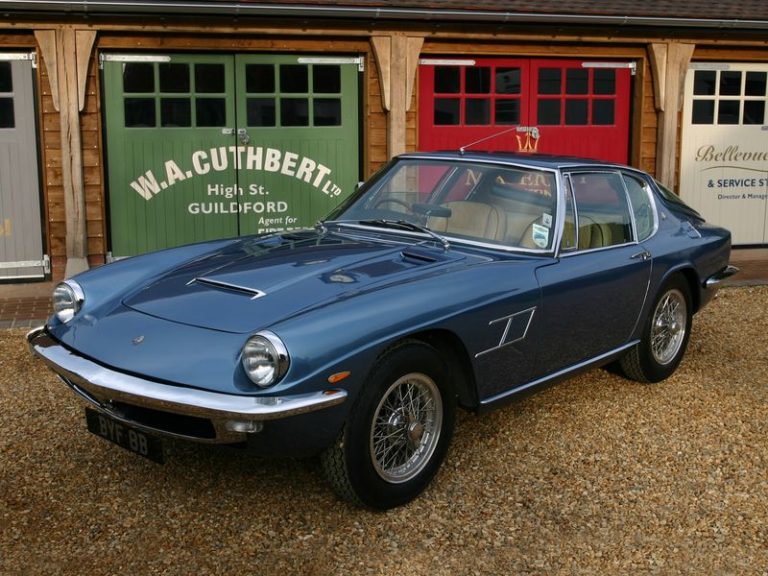
Origins and Style: From “Due Posti” to Mistral
The project began under the internal name Due Posti (“two seats” in Italian). The coupe’s exterior was designed by Pietro Frua—a renowned master of automotive design of the time. His vision left no room for unnecessary lines or decorative excess—everything in the Mistral was dedicated to harmony of proportions and functional form.
The body featured smooth, aerodynamic shapes, with a long hood and air intakes, large glass surfaces, and a distinctive sloping roofline flowing into an angled rear end with a large tailgate. The design conveyed understated sportiness and confident style—everything a true enthusiast of Italian cars would seek.
Interestingly, Frua was simultaneously working on the four-door Quattroporte, which would later become a brand icon. As for the “Due Posti” name, it didn’t stick: at the request of foreign dealers, a more distinctive name was chosen, and it was French Maserati importer Colonel Simone who suggested “Mistral.”
Engineering and Technical Excellence
The Mistral was the last Maserati to feature the legendary inline-six engine with racing pedigree in its DNA. The powerful naturally aspirated engines—available in 3.5, 3.7, and 4.0 liters—had a unique design with dual overhead camshafts and a Lucas mechanical fuel injection system.
Weighing around 1,270 kg (2,800 lbs), even the “mid-range” 3.7-liter engine with 245 hp provided impressive performance. The car could accelerate from 0 to 100 km/h (0–62 mph) in under 8 seconds, with a top speed exceeding 240 km/h (149 mph). The transmission was a five-speed manual, reinforcing the coupe’s sporting character.
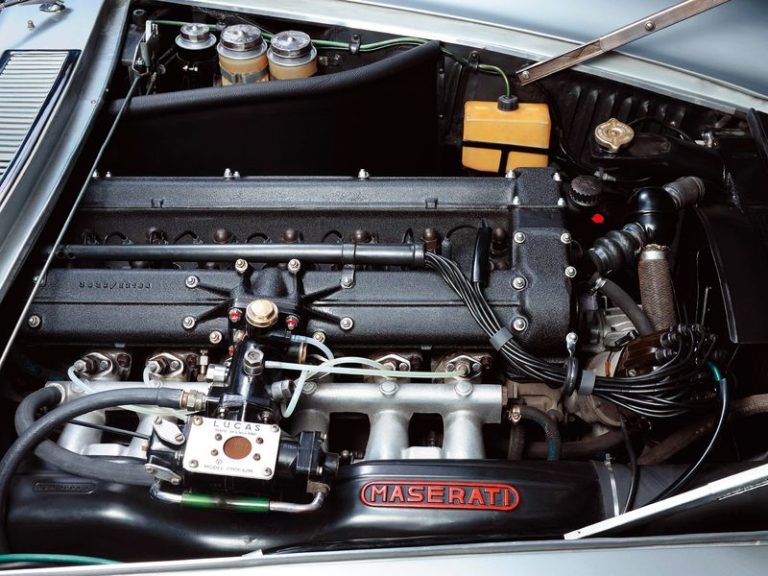
Production and Recognition
Series production began in 1964, following its debut at the Turin Motor Show. The bodies for the Mistral were manufactured by the Turin-based company Maggiora, and each car was hand-assembled with an individual approach to trim and equipment.
By 1970, a total of 828 coupes and 120 cabriolets (Spyders) had been produced. The latter were often fitted with a removable hardtop, making them versatile for both city driving and long-distance travel.
Buyers praised the Mistral for its precise handling, build quality, and excellent usability. It was more refined than Ferraris of the time, more comfortable for long journeys, and equally prestigious.
Technical Specifications of the Maserati Mistral
The Mistral was the last Maserati to use the inline six-cylinder DOHC engine—a direct descendant of the racing 250F power unit. Available in 3.5, 3.7, and 4.0-liter versions, even the 3.7-liter variant delivered strong performance, comfortably reaching 240 km/h (149 mph).
In the first months of production, the Mistral was equipped with the 3.5-liter inline-six borrowed from the 3500 GTI. Even this base version showcased Maserati’s engineering boldness. Each engine had two spark plugs per cylinder, ensuring smooth and stable combustion—a rarity among production cars of the era.
Another signature feature was the twin overhead camshafts, driven by a chain. The cylinder head featured hemispherical combustion chambers, providing strong torque and high efficiency at medium and high revs. Each engine was fitted with Lucas mechanical fuel injection, which in the 1960s was cutting-edge technology.
It’s worth noting that all Mistral engines traced their lineage back to Maserati’s racing powerplants—particularly the legendary 250F, which secured numerous Formula 1 victories in the 1950s. As a result, the Mistral driver wasn’t just behind the wheel of a powerful car—they were driving a descendant of championship-winning machines.
Specifications (1963 version):
| Engine | inline-six DOHC |
| Displacement | 3,694 cc |
| Power | 245 hp |
| Transmission | 5-speed manual |
| Chassis | steel spaceframe |
| Suspension | front – independent, rear – live axle with leaf springs |
| Brakes | disc brakes |
| Body | 2-seater coupe or Spyder |
| Weight | 1,270 kg (2,800 lbs) |
| Top speed | 245 km/h (152 mph) |
| 0–100 km/h | approximately 8 seconds |
Despite having an older-style rear suspension, the car delivered confident handling and comfort—even in versions equipped with an automatic transmission.
Body Construction of the Maserati Mistral and Engineering Lightness
One of the main advantages of the Maserati Mistral was its optimal weight, thanks to extensive use of aluminum. Body panels that were not load-bearing were made from this lightweight metal — including the doors, hood, and, on the Spyder version, the trunk lid. This approach significantly reduced the car’s mass without compromising rigidity.
The body was mounted on a strong steel tubular frame, ensuring the necessary structural integrity while keeping weight relatively low. As a result, even the base versions with a 234 hp engine could confidently reach 235 km/h (146 mph) — an impressive figure for the mid-1960s.
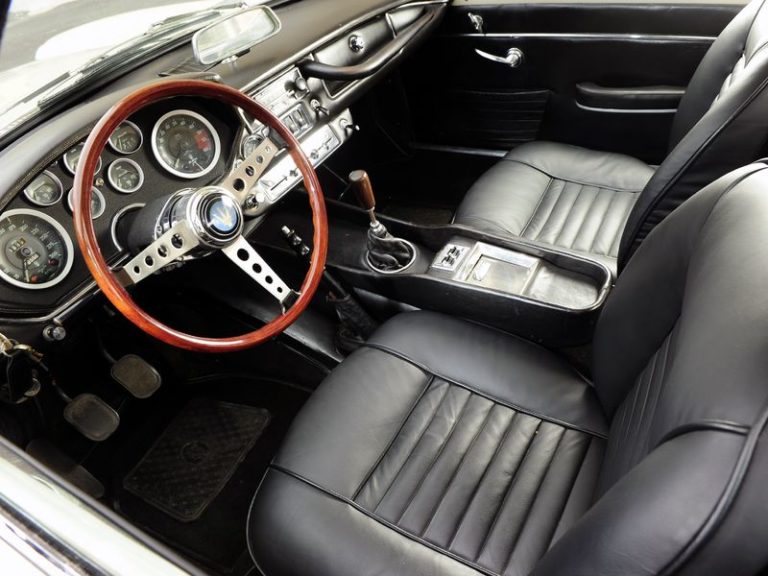
Maserati Mistral Interior: Luxury, Comfort, and Functionality
The Mistral’s interior is a story in itself. The two-door coupe was strictly a two-seater, with every square centimeter of space designed with attention to detail. The cabin featured premium natural leather, a wooden steering wheel, and refined door panel trim — creating an atmosphere of understated Italian luxury.
The center console and dashboard were not only stylish but also highly functional. It housed seven analog gauges providing the driver with all key information — without cluttering the layout. Perfect ergonomics was another hallmark that set the Maserati Mistral apart from its competitors.
Evolution of Maserati Mistral Engines: From 3.5 to 4.0 Liters
In the summer of 1964, the Mistral lineup was joined by the Mistral 3700, featuring an upgraded 3.7-liter inline-six producing 245 hp. With increased torque, this engine allowed the car to reach 100 km/h (62 mph) in 6.4 seconds and achieve a top speed of 245 km/h (152 mph).
Soon after, an even more powerful variant appeared — the Mistral 4000 with a 4.0-liter engine, producing 255 hp, accelerating the coupe to 100 km/h in just 6.2 seconds and reaching a top speed of 255 km/h (158 mph). These were highly respectable figures for a mid-1960s production Gran Turismo.
Competition with Ferrari and Its Own Niche
In those years, the Maserati Mistral was often compared to Ferrari models, and while it fell short in outright performance, it had several notable advantages. Firstly, reliability — the Mistral’s components were less demanding in maintenance. Secondly, interior comfort — it was roomier and better suited for everyday use. Thirdly, pricing — it was more accessible, opening Maserati ownership to a wider range of grand tourer enthusiasts.
Thus, the Mistral carved out its own niche in the market — positioned between Ferrari’s extreme sports cars and the more comfortable but less emotionally engaging GTs from other brands.
Maserati Mistral Equipment: A High Standard for Its Time
Standard equipment for the Mistral included:
- disc brakes on all wheels
- 5-speed manual transmission
- luxurious leather-trimmed interior
Available options included:
- air conditioning — a rare feature even among premium models of the era
- automatic transmission — offered on request, mainly for the U.S. market
These features made the Mistral a versatile car, suitable for both long-distance touring and classic city driving.
Suspension: Proven Solutions
The Mistral’s front suspension — independent with double wishbones and coil springs — provided excellent steering precision. The rear — a live axle with leaf springs — was already considered outdated at the time of development. Nevertheless, even with this setup, the car displayed high-speed stability and strong road-holding capabilities.
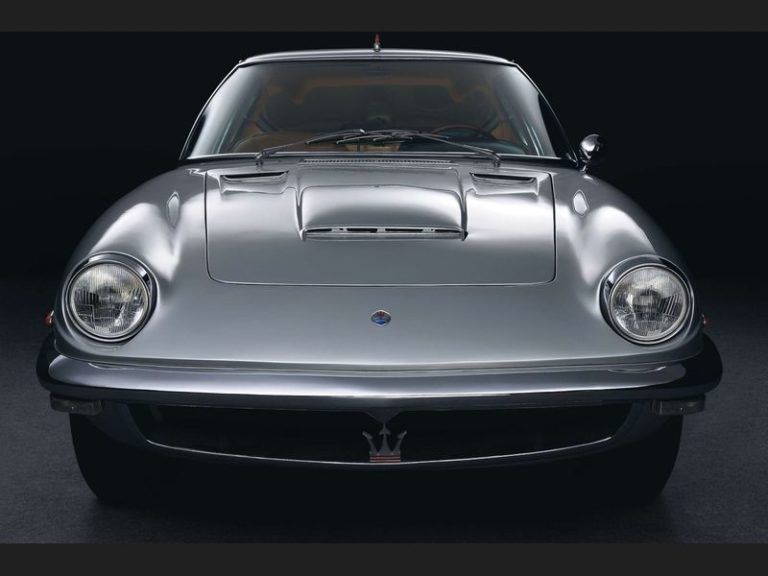
Legacy and the Last Inline-Six
The Mistral was the last Maserati to use a large-displacement inline-six engine, tracing its origins back to the racing cars of the 1950s. With the end of this model’s production, an entire technical era for the brand came to a close.
Production of the Mistral continued until 1970, during which time the following were built:
- 828 coupes
- 120 cabriolets (Spyders)
The latter are now an extreme rarity on the market and hold high collector value. They combine the very best of Frua’s unique design, Maserati’s classic mechanics, and limited production numbers.
Maserati Mistral Technical Specifications
| Parameter | Mistral 3500 | Mistral 3700 | Mistral 4000 |
|---|---|---|---|
| Body type | 2-door coupe | 2-door coupe | 2-door coupe |
| Fuel system | Lucas mechanical injection | Lucas mechanical injection | Lucas mechanical injection |
| Number of cylinders | Inline-six | Inline-six | Inline-six |
| Displacement, L | 3.485 | 3.694 | 4.014 |
| Max power, hp/rpm | 234 / 5500 | 245 / 5500 | 255 / 5500 |
| Torque, Nm/rpm | 314 / 4000 | 343 / 4000 | 363 / 4000 |
| Drive | Rear | Rear | Rear |
| Transmission | 5-speed manual or AT | 5-speed manual or AT | 5-speed manual or AT |
| Front suspension | Independent coil spring | Independent coil spring | Independent coil spring |
| Rear suspension | Dependent, leaf spring | Dependent, leaf spring | Dependent, leaf spring |
| Length, mm | 4500 | 4500 | 4500 |
| Width, mm | 1600 | 1650 | 1650 |
| Height, mm | 1300 | 1300 | 1300 |
| Wheelbase, mm | 2400 | 2400 | 2400 |
| Curb weight, kg | 1425 | 1430 | 1435 |
| Top speed, km/h | 235 | 245 | 255 |
| 0–100 km/h, s | 8.0 | 6.4 | 6.2 |
Rare Maserati Mistral Parts
The limited production volume of the Maserati Mistral — only 828 coupes and 120 cabriolets (Spyders) — makes this model not only a collector’s gem but also a true challenge for restorers. Most parts were handmade on an individual basis, meaning no mass-produced equivalents exist.
Over the years, many original components have been lost, worn out, or removed from circulation, making them scarce or irreplaceable. Even with 3D printing and modern replication technologies, not every element can be reproduced with complete authenticity.
Rarest Maserati Mistral Components
- Lucas fuel injection system — a mechanical injector used on all Mistral engine versions, complex to service and highly sensitive to wear. Adjustment and calibration require a specialized bench and expertise in vintage engineering.
- Dashboard with original Jaeger gauges — a complete set of factory-marked instruments is extremely rare. Most surviving dashboards have replaced or damaged elements. Original examples are highly valued among collectors.
- Aluminum body panels (doors, hood, Spyder trunk lid) — handmade from thin aluminum. Lightweight yet prone to deformation and corrosion. Restoring the original requires a lengthy process and experience in aluminum bodywork restoration.
- Natural leather interior trim — each car used leather of a unique color and grain. Modern reproductions cannot fully capture the texture and tone of historical materials, making preserved originals immensely valuable.
- French-spec rear lights (French market versions) — featured unique mounts, glass, and markings. Due to market differences, finding a matching pair or set for a French version is nearly impossible without a donor car.
- Wire wheels with central locking nut — original wire rims had a special diameter and construction. Most modern reproductions are incompatible with the factory hub. The price of an authentic set can reach tens of thousands of euros.
Restoring a Maserati Mistral is more than repairing a car — it’s precise work with historical materials, components, and engineering solutions from the 1960s. Original parts are not just technical elements but part of Maserati’s cultural heritage, requiring preservation, careful handling, and a deep understanding of the era.
Popular Genuine Parts for Maserati Mistral
The MIE Corporation website offers a wide selection of compatible and genuine parts for the Maserati Mistral — from rare body panels to engine components and interior elements. In our online catalog, you will find brand-new parts as well as restored or carefully inspected used components that have retained their authenticity.
We offer:
- Maserati / Mistral / Differential, Driveshaft And Axle Parts
- Maserati / Mistral / Accessories Other Related Parts
- Maserati / Mistral / Belts Hoses Cables Parts
- Maserati / Mistral / Body Panels Parts
- Maserati / Mistral / Brake Parts
- Maserati / Mistral / Climate Systems Parts
- Maserati / Mistral / Clutch And Hydraulics Parts
- Maserati / Mistral / Chassis And Other Related Parts
- Maserati / Mistral / Cooling System Parts
- Maserati / Mistral / Engine External Parts
- Maserati / Mistral / Engine Electrical Parts
Our catalog is designed so you can quickly find the required part by model, production year, or part number. Each product is accompanied by a photo, description, and condition details, and MIE Corporation specialists are ready to provide advice on compatibility and selection.
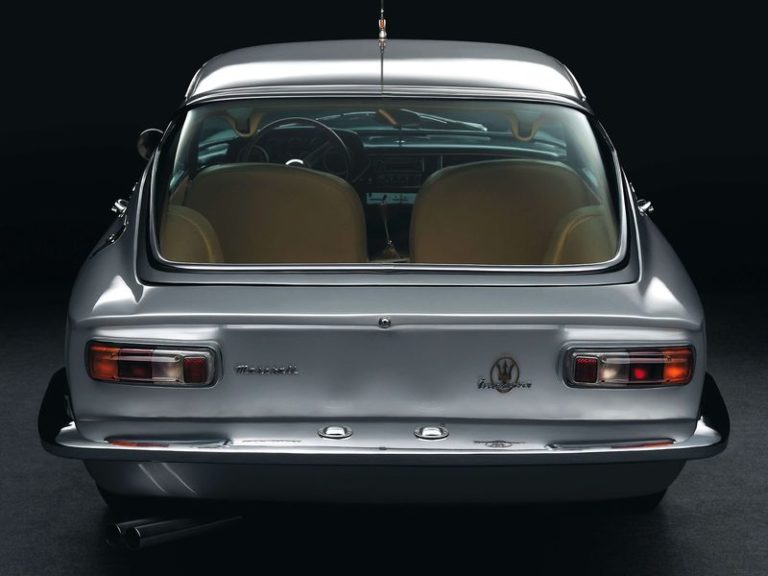
Model Significance
Although the Mistral lagged behind Ferrari in pure performance, it was far more practical for daily use. It was praised for its refined design, high comfort, and the elegant restraint that became a Maserati signature.
Today, the Mistral is more than a rare car — it’s a model that combines tradition, Italian engineering, and near-museum value for collectors. Restoring such a car is not simply replacing parts — it’s a careful reconstruction of heritage with utmost respect for the original.


